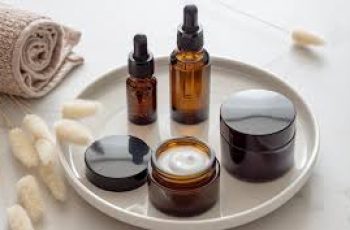
Understanding Botox: How it works, and what to expect
What is Botox?
Botox, also known as botulinum toxin type A, is a protein derived from the bacterium Clostridium botulinum. When cells break apart in C. botulinum cultures, they release the toxin, which is then purified and prepared for medical use. It is commonly used in cosmetic procedures to reduce the appearance of wrinkles. Botox and other botulinum toxins are not used in topical skin care products, but there are many other topical anti-aging strategies available.
Botox Cosmetic, often referred to simply as “Botox,” was first introduced for cosmetic use in 1981 and gained FDA approval in 2002 for the treatment of frown lines. If you’re looking for anti-aging products to increase the effectiveness of your Botox injections, take the Baumann Skin Type Quiz for free today for a full regimen recommendation!
How does Botox work?
Botox works by targeting the SNAP-25 protein, which is essential for the release of acetylcholine, a neurotransmitter responsible for muscle contraction. By breaking SNAP-25, Botox prevents the muscle from contracting, leading to a reduction in wrinkles and a smoother appearance of the skin.
How long does botox last?
The effects of Botox are temporary, lasting typically between 3 to 6 months. The duration depends on how quickly the body can regenerate the SNAP-25 protein. Throughout my career as a dermatologist, I have noticed some anecdotal patterns of who Botox works the longest for. Factors such as a healthy lifestyle, exercise, and a protein-rich diet may accelerate your body’s regeneration of SNAP-25 proteins, potentially shortening the duration of Botox’s effects. While there aren’t really any studies to support this hypothesis, I have observed that the more active and healthy you are, the faster Botox wears off.
Benefits of Botox
In addition to its cosmetic benefits, Botox is used to treat a variety of medical conditions, including hyperhidrosis (excessive sweating), chronic migraines, and muscle spasms. Its ability to relax muscles has made it a valuable tool in both dermatology and neurology, with new indications frequently reported.
Botox Side Effects
Common side effects include pain or bruising at the injection site, headache, and temporary muscle weakness. In rare cases, more serious side effects such as difficulty breathing or swallowing can occur. It’s important to only get Botox injections from doctors and trained medical providers.
What does Botox cost?
The cost of Botox varies depending on the area treated and the number of amount required. Prices can range from $200 to $800 per session, with factors such as location and provider expertise also influencing the cost. Different providers charge you different rates depending on many factors such as location, reputation, and skill level of the injector. Make sure to consider the reputation of your provider when justifying prices.
Does Botox hurt?
The injection process is generally quick and causes minimal discomfort. Some patients may feel a slight pinching sensation, but the use of a fine needle and optional topical numbing cream can help reduce any pain.
What types of doctors can give botox?
Botox injections should be performed by a licensed healthcare professional with experience in administering botulinum toxin, such as a dermatologist or plastic surgeon. In some states physician assistants, nurse practitioners, dentists, and aestheticians (In Texas and Arizona) are allowed to inject these toxins but proper training and expertise are crucial for ensuring safe and effective treatment. That being said, there are a number of people who are technically allowed to provide botulinum injections that are not well trained and do not understand the facial anatomy and all of the safety issues.
A Dermatologist’s thoughts on Botox
Botox’s popularity as a cosmetic treatment is well-founded, thanks to its ability to smooth wrinkles and provide a more youthful appearance. It is safe when used correctly by a well trained medical professional, and is extremely well studied. Understanding how Botox works and what to expect can help you make informed decisions about this treatment. Always consult with your doctor or medical provider to make sure you need Botox, and to get it done properly.
botulinum toxins
Botulinum Toxins in Skin Care
While Botox is the most well-known botulinum toxin Type A (BTX-A) used in skincare, there are several other BTX-A formulations available, each with its own unique properties that make them vary slightly.
The FDA approved botulinum toxin Type A injections for wrinkles such as frown lines (11s) include:
Botox (OnabotulinumtoxinA)
Dysport (abobotulinumtoxinA)
Xeomin (incobotulinumtoxinA)
Jeuveau (prabotulinumtoxinA)
Daxxify (daxibotulinumtoxinA-lanm)
Dysport (AbotulinumtoxinA)
Dysport is similar to Botox but has a slightly different formulation. It is often used for the same cosmetic purposes as Botox, such as treating wrinkles and fine lines. Most cosmetic injectors say that one unit of Botox is equivalent to approximately 2.5 to 3 units of Dysport.
Xeomin (IncobotulinumtoxinA)
Xeomin is unique in that it contains only the pure neurotoxin without any extra proteins, which may reduce the risk of developing resistance. It is often used for treating frown lines and other facial wrinkles. Clinical studies have shown that Xeomin has a similar efficacy and safety profile to Botox, with a comparable duration of effect.
Jeuveau (PrabotulinumtoxinA)
Jeuveau is a newer botulinum toxin that has been specifically designed for cosmetic use. It is similar to Botox in terms of its molecular structure and mechanism of action. Jeuveau has been shown to be effective in reducing the appearance of glabellar lines (frown lines) and has a similar safety profile to other botulinum toxins.
comparing botulinum toxins
Comparing Botulinum Toxins
While all these botulinum toxins work in a similar way by targeting the SNAP-25 protein and preventing muscle contractions, they differ in their specific structures, speed, and duration. The choice between them depends on various factors, including the area being treated, your goals, and sensitivities. It’s important to consult with a knowledgeable doctor or medical provider to figure out which botulinum toxin is most suitable for your specific needs.
Conclusion
Botox is just one of several botulinum toxins used in skincare for their muscle-relaxing properties. Dysport, Xeomin, and Jeuveau are all notable alternatives, each with its own advantages and disadvantages. Understanding the differences between these toxins can help you make an informed decision when considering a botulinum toxin treatment.
Thanks for checking out this blog on botulinum toxins, I hope you feel more informed on the science and safety of popular injections for wrinkles. If you have any questions or comments, please leave them down below! Make sure you’ve taken our Skin Type Quiz to get your skin health on track today! Remember, increasing collagen with the correct skincare can complement the results of any cosmetic procedures you have.


